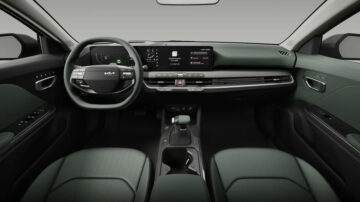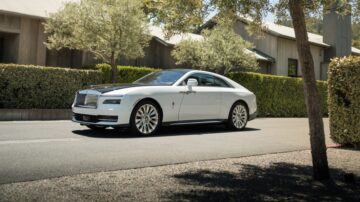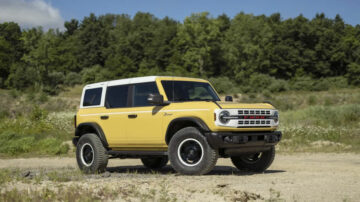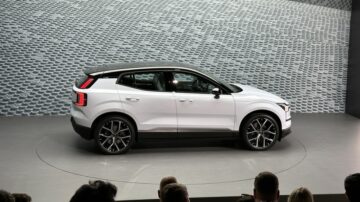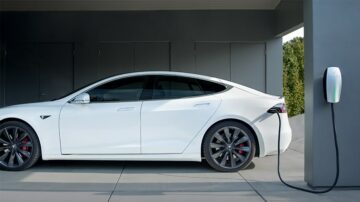
Sorry, Joel. I know you’re excited about Mazda bringing back the rotary engine as a range extender for the MX-30. I would be too if it were 8-10 years ago. But now (and probably even back then), the Mazda rotary range extender is a silly idea.
We’re waiting for Mazda to reveal its rotary-range-extended MX-30 this week in Brussels, and it’s been a long time coming. As Mazda said back in 2021, “This technology is being engineered for nearly silent operation and will replenish the battery rather than drive the wheels. As a result, the MX-30 will always drive like the engaging EV that it is, but with freedom to charge from the wall or on the go.” Despite the adulatory PR speak, that doesn’t sound all that great for a few reasons, and not just because of the dubious market prospects of range extenders these days.
Range extenders might still serve a purpose for a little while. More range-extended EVs would probably have better served the public than the numerous plug-in hybrids with minimal electric range that we got instead, especially prior to the longer-range BEVs available now. REx systems are a last resort for ameliorating range anxiety, largely for owners who don’t live where public charging infrastructure is built out. And if charging providers keep failing as hard as they do, extenders might still find meaning in a vast, drivable country like the U.S., but that window of opportunity is closing, if it hasn’t already, as battery costs and charging infrastructure improves.
Range extenders should no longer be an excuse to offer crappy range from an EV. Then you’ve just got a low-performing plug-in hybrid with even more compromised efficiency. If you’re driving an EV with a meager range of 100 miles — or less if Mazda has to sacrifice battery capacity to make room for the rotary system — many drivers will find themselves relying on that extender too often, killing the joy of having an EV, while others will avoid employing it as much as possible, if at all (thus wishing they’d have just gone full BEV). And maybe this range extender won’t detract from the driving experience by putting the car into a low-powered limp mode (looking at you, BMW i3), but it won’t add anything to the enjoyment of the experience the way a rotary normally would.
Most of the fun of a Wankel engine, besides its status as an automotive oddity, is its personality at peak performance, specifically the high revs, the distinct sound and the power delivery. And while those thrills won’t translate in a range extender, the rotary will add complexity and another vector of eventual maintenance to ownership. With the luxury of hindsight, a rotary’s reliability isn’t something to get excited about. A general lack of cleanliness and thermal efficiency make it an even worse candidate to support an EV.
If you’re going to put up with a rotary engine in an electrified car, you should at least get to enjoy the advantages it does offer. But its inherent compromises lead me to think, despite Mazda’s current attempt to prove the contrary, that the rotary is dead for good. If you really want to justify its resurrection, the Wankel should drive the wheels — not just charge the battery — and the e-motors should assist in the fun … at least while there’s still a market for hybrid powertrains that focus on power over efficiency. I don’t think that would be on my wishlist for a daily driver, at least not in the body of an MX-30, but it’d still be neat despite being instantly outdated.
Otherwise, we should just let the rotary rest in peace. And if range extenders find market popularity again — which I doubt they will — let them be as clean, efficient and invisible as possible. That is to say, conventional. That’s not always a bad thing.
Related video:
.embed-container { position: relative; padding-bottom: 56.25%; height: 0; overflow: hidden; max-width: 100%; } .embed-container iframe, .embed-container object, .embed-container embed { position: absolute; top: 0; left: 0; width: 100%; height: 100%; }
- SEO Powered Content & PR Distribution. Get Amplified Today.
- Platoblockchain. Web3 Metaverse Intelligence. Knowledge Amplified. Access Here.
- Source: https://www.autoblog.com/2023/01/11/opinion-mazda-mx30-rotary-range-extender/
- 1
- 100
- 7
- 9
- a
- About
- Absolute
- advantages
- All
- already
- always
- and
- Another
- Anxiety
- automotive
- available
- back
- Bad
- battery
- because
- being
- Better
- BMW
- body
- Bringing
- built
- candidate
- Capacity
- car
- charge
- charging
- closing
- complexity
- Compromised
- contrary
- conventional
- Costs
- country
- Current
- daily
- Days
- dead
- delivery
- Despite
- distinct
- Doesn’t
- Dont
- doubt
- drive
- driver
- drivers
- driving
- efficiency
- efficient
- Electric
- engaging
- Engine
- enjoy
- especially
- EV
- Even
- eventual
- excited
- experience
- few
- Find
- Focus
- Freedom
- from
- full
- fun
- General
- get
- Go
- going
- good
- great
- Hard
- having
- height
- Hidden
- High
- HTTPS
- Hybrid
- i3
- idea
- improves
- in
- Infrastructure
- inherent
- instead
- IT
- Keep
- Know
- Lack
- largely
- Last
- lead
- little
- live
- Long
- long time
- longer
- looking
- Luxury
- maintenance
- make
- many
- Market
- max-width
- meaning
- might
- minimal
- Mode
- more
- nearly
- Neat
- normally
- numerous
- object
- offer
- operation
- Opinion
- Opportunity
- Others
- owners
- ownership
- Peak
- performance
- Personality
- plato
- Plato Data Intelligence
- PlatoData
- popularity
- PoS
- position
- possible
- power
- pr
- Prior
- probably
- prospects
- Prove
- providers
- public
- purpose
- put
- Putting
- range
- reasons
- reliability
- Resort
- REST
- result
- Room
- sacrifice
- Said
- SEC
- serve
- should
- something
- Sound
- speak
- specifically
- Status
- Still
- support
- system
- Systems
- Technology
- The
- themselves
- thermal
- thing
- this week
- time
- to
- too
- top
- translate
- u.s.
- Vast
- Video
- Waiting
- week
- which
- while
- WHO
- will
- would
- years
- zephyrnet

